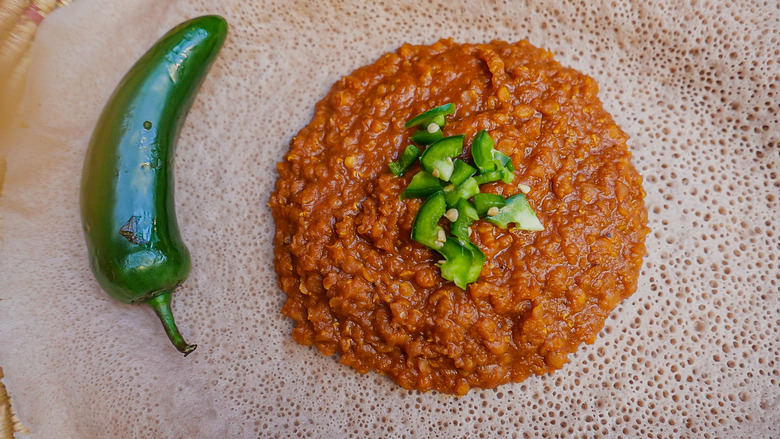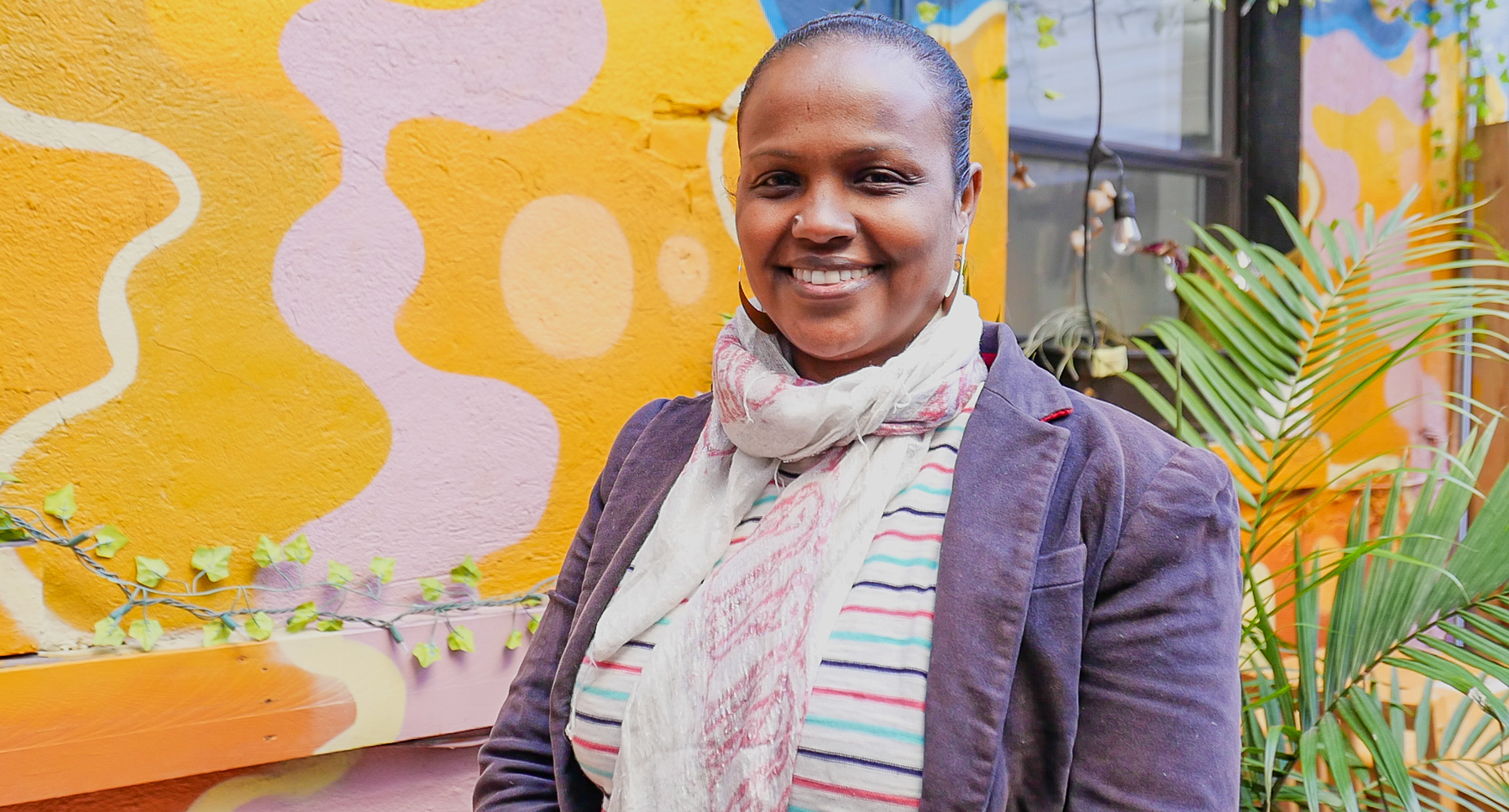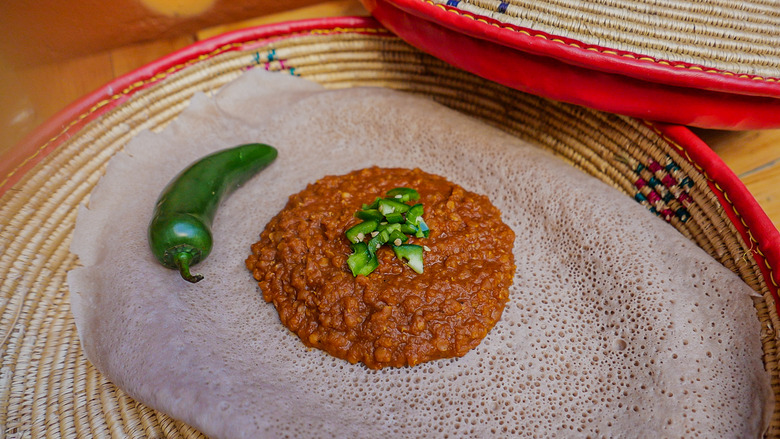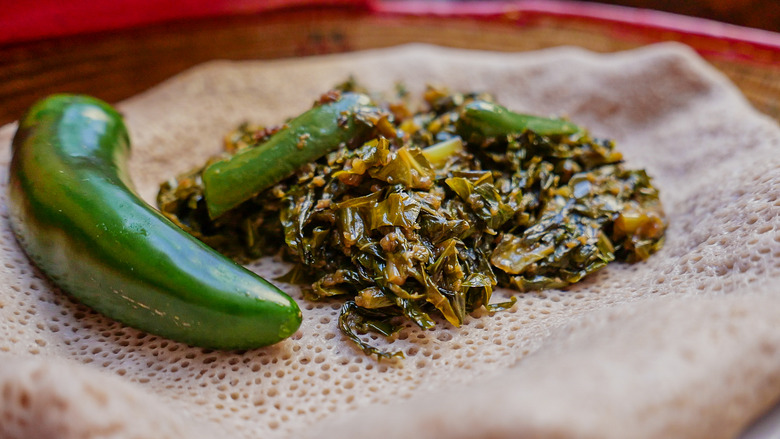Make Ethiopian Food For Passover This Year
We may receive a commission on purchases made from links.
For Beejhy Barhany, Passover means family, freedom and food. Lots and lots of food. Growing up in Israel, she and dozens of aunts, uncles, grandparents and cousins would gather to spend a few days together praying, dancing, laughing, cooking and eating.
28 Delicious Kosher for Passover Recipes
Her family would slaughter a lamb or two — an ancient Passover tradition that most contemporary Jewish families honor only symbolically with a shank bone on the Seder plate. Her mother would then make various lamb stews — a super spicy version for the adults and a milder one for the kids — which she would serve with matzo or rice.
And they would make fresh matzo daily; "going and buying matzo is unheard of," says Barhany. These and other Ethiopian dishes from her family's homeland such as doro wot — a chicken stew that is simmered all day — played an integral role in their Passover seders.
How to Make Matzo for Passover
These meals also incorporated ingredients and dishes from their adopted home of Israel, especially fresh vegetables. "Cauliflower salad, Arab/Israeli salad, eggplant — we'd have at least 20 types of salad," Barhany recalls. "You will never leave hungry. Hospitality is an Ethiopian tradition. On Pesach, if you don't have a place to go for Seder you don't even need an invitation; you just come."
Today, the 45-year-old chef brings a combination of those traditions and flavors to her Harlem restaurant, Tsion Cafe — along with a deeper understanding of Ethiopian Jews and the richness of the Jewish diaspora.
The name of the restaurant, which has been open since 2014, is an homage to Mount Tsion — often spelled Zion — in Jerusalem, which is both a real place and a symbol of Israel as the Promised Land. After serving in the Israeli army and traveling the world, Barhany landed in New York, which she has called New York home for 22 years. But "my heart is still connected to Tsion," explains Barhany. "My devotion to Judaism is there even if I am not in Israel."
Barhany's earliest memories in Ethiopia were happy ones: climbing trees, playing in the river, eating freshly picked fruit. "We had a very comfortable life with cows and goats and growing our own vegetables," recalls Barhany. "We had good interactions with our neighbors, both Christian and Muslim." But Barhany's family longed to join their relatives who had already emigrated to Israel.
So, when she was 4, her family and some 300 other Ethiopian Jews in her community sold what they could and spent the next three years on foot making their way to Israel. "That great belief that we as Jews should be living among our brothers and sisters of the diaspora in the Promised Land — that was the drive of [leaving] Ethiopia and making this treacherous journey," explains Barhany. "We had been dreaming and yearning for years. To me, the connection, the devotion, the resourcefulness — it's a unique spiritual passage that Ethiopian Jews decided to take upon themselves. It was an exodus."
There are, in fact, many parallels between her story and the Passover story. Just as Moses led the Israelites out of Egypt to guide them to the Promised Land, so too did Barhany's family leave Africa for Israel. It is one of the many reasons why the holiday is so meaningful for Barhany. "It's all about celebrating freedom and pride of who you are and celebrating spring," she says. "It's happy."
Those who are unfamiliar with Ethiopian Jewry often try to categorize them within other traditions. "As an Ethiopian Jew, some people think we are Sephardic, but we are not part of that group," explains Barhany. "There is always this division of Sephardi or Ashkanazi or Mizrahi – but we are none of that." Ethiopian Jews, also called Beta Israel, lived independently from European Jewish communities for centuries yet share many religious beliefs, holidays, adherence to a kosher diet, observation of weekly shabbat and more with their global counterparts.
And while Ashkenazi Jews have historically avoided rice and lentils on Passover along with the forbidden grains and typical risen bread products, the times are changing. In 2016, the Committee on Jewish Law and Standards ruled that Ashkenazim should be able to join their Sephardic, Mizrahi and Ethiopian brethren in the Passover consumption of rice and legumes.
For the Beta Israel, legumes have always been permitted yearround. As such, messer wot, a traditional Ethiopian red lentil stew, is one of Barhany's Passover favorites. "I think it is a hearty, comforting, delicious food that I think is worthwhile and somewhat easy to make," she says. Barhany hopes that non-Ethiopian Jews might consider including dishes like this from across the diaspora on their Passover table.
For those that still don't feel comfortable eating lentils during Passover, Barhany suggests Ethiopian goman, a dish of collard greens simmered with onion, garlic and ginger. "In the U.S., I associate collards with ham and meat, but I wanted to bring in a clean version of collard greens and show that you don't need to make it with animal fat," says Barhany.
If not these, then Barhany urges folks to do some research and find something new to bring to their Seder this year. As she says, "We need this Pesach, or any other Pesach, to open and accept and celebrate Jewish diversity through food."
Messer Wot
This Ethiopian red lentil stew is vegan and great for Passover if your tradition permits lentils, but it's truly delicious any time of year. It's a simple, flavorful dish consisting of onions, garlic, ginger, tomato paste, red lentils and the Ethiopian spice mix berbere.
Ethiopian Goman
Collard greens are hearty, nutritious and readily available in the U.S. Like messer wot, this vegan side dish relies on onions, garlic and ginger for its flavor. This would make a great addition to your holiday table or a tasty veggie for a barbecue.
For the Ethiopian Goman recipe, click here.
Tribune Publishing may earn a commission if you purchase a product through one of our links.



